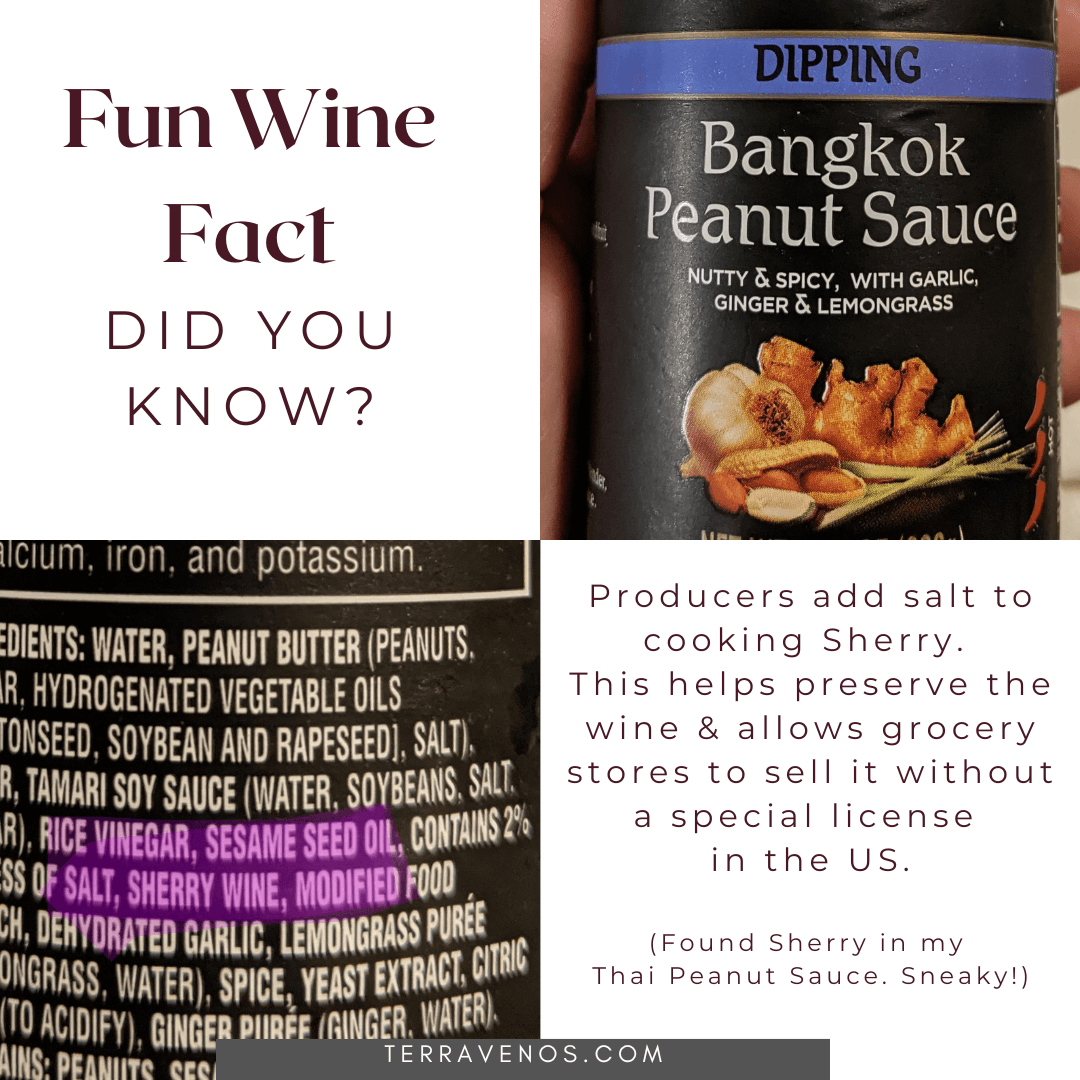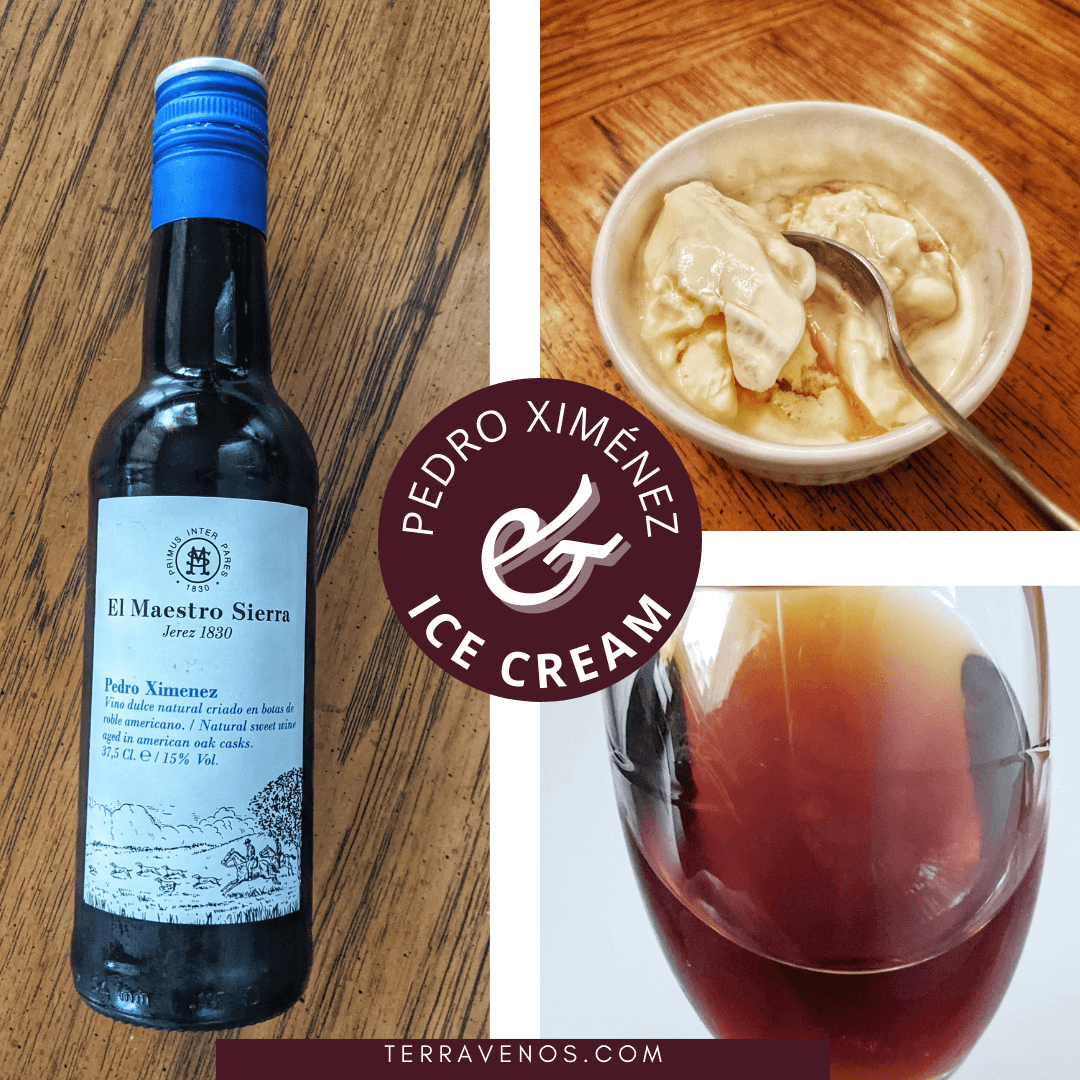
How Is Sherry Different from Wine?
Both Sherry and wine are made from grapes, but Sherry goes through additional winemaking steps. Technically, Sherry is considered wine but has distilled alcohol spirit added to it during the winemaking process making it a fortified wine. Most wines are between 12%-15% ABV; most Sherries are between 15%-22% ABV. Dry wines showcase fresh fruit, but Sherries have nutty, caramel, and dried fruit notes.
Is Sherry Considered a Wine?
Yes, Sherry is considered wine. Wines are made by fermenting grape juice into alcohol. Just like standard table wines (the kind you buy at your local liquor or grocery store), Sherry starts out using the same winemaking processes.
Unlike your standard table wine made from Cabernet Sauvignon or Chardonnay, Sherry producers use grapes that may be unfamiliar to you.
- Palomino. This is a thin-skinned, rather neutral white grape. Palomino is the most common grape used in Sherry production.
- Pedro Ximénez. This is a white grape with large clusters. It’s used to make sweet Sherries or as a sweetener for dry Sherries.
- Moscatel. This is an ancient, aromatic white grape that’s grown around the world to make a range of wine styles. Very small quantities are grown for sweet Sherry production.

What’s the Difference in Winemaking Between Wine and Sherry?
Not to get into too much technical detail, but wine is made using the juice from crushed grapes. Yeast eat the sugar in the grapes, metabolizing it into alcohol, CO2, and heat.
Helpful Tip: Here’s a more in-depth (slightly geeky) post on how wine fermentation works here.
Grapes destined for dry table wines have enough sugar in them to create a wine with around 12%-15% alcohol by volume (ABV).
Once the yeast convert all of the sugar into alcohol, you technically have wine.
Now the winemaker will decide if your wine needs to be aged in oak, blended, or go through some other process to make it ready for bottling, but essentially the major winemaking steps are complete.
Sherry goes through this first winemaking process just like your typical bottle of wine.
Unlike regular wine, after this step, the winemaking process for Sherry is just getting started.
What’s Different about Winemaking for Sherry?
The base wine destined for Sherry ferments to around 11%-12% ABV (still in the range of ‘normal’ for an average bottle of regular wine).
At this point, the Sherry producers fortify the wine to about 15% ABV with distilled grape spirit and move the wine into a storage area, called a sobretabla, and wait to complete a quality assessment.
They are waiting to see if the wine develops a biological film of yeast (like you’d see growing on old juice in your fridge).
Why is this yeast film important?
If the wine develops this layer of yeast film, called flor, the Sherry makers will move the wine into a complicated blending and maturation system called the solera.
Here the wine sits and begins a long process of slow aging.
Over several years, the wine will develop bruised apple and nutty qualities.
Yeast are fickle, however, and not all wines have the makeup to support yeast to go through this aging process.
If the wine doesn’t develop this layer of flor, then it’s fortified to about 17% ABV and moved into barrels that aren’t completely full.
This allows gentle oxidation of the wine over several years. The Sherry will develop caramel, walnut, hazelnut, and savory leather notes.
So the main difference between wine and Sherry comes down to this complex system of aging the wines to bring out dried fig, bruised apple, raisin, caramel, walnut, and leather aromas and flavors in the wines.
Sherry will be a distinctive drinking experience compared to your typical red or white wine that has fresh, fruity flavors.

Where Is Sherry Made?
If you see the word ‘Sherry’ on a wine label, it came from southwestern Spain.
Similar to the term ‘Champagne’ this is the only region in the world that can legally use the word ‘Sherry’ on its wine labels. It is protected under EU law.
The Zona de Produccion, or Production Zone, forms a triangle between three cities:
- Jerez de la Frontera
- Sanlucar de Barrameda
- El Puerto de Santa Maria
Now, you may still find Sherry-style wines in other regions. However, these fortified wines are rare because of the production costs.
Wine producers specializing in Sherry need to have vast reserves of wine going back years, if not decades.
The complex, multi-year production process means that a wine business cannot recoup production costs immediately (i.e., you don’t make any money on your wine until you sell it, and if it takes 10 years to make, you need a solid business plan to keep yourself in business).
Most wine producers need to minimize the time to market for cash flow.
This is why savvy wineries in the US often make a young white wine and a rosé that can be released around 4-6 months after harvest. This lets them hold back their red wines that need 12, 18, or 24 months to mature.
But can you imagine having to hold onto your inventory for 5, 7, 12, 15, or even 20 years?
For the money reason alone, you’re unlikely to find fortified Sherry-style wines in any new world region.
What Styles of Sherry Are Popular?
Just like regular wine, Sherry comes in a dizzying portfolio of styles. These can be divided into 2 overarching categories: dry and sweet.
The most popular Sherries are Finos and Manzanillas, both dry wines.
Made in a similar fashion to each other, Finos and Manzanillas have a bruised apple and dried citrus quality. They’re yellowish, light in body, and only around 15% ABV.
What to Pair with Sherry?

The spectrum of Sherry styles means that they’ll all pair with different foods.
Personal Note: I enjoy turkey sandwiches and fried calamari with my Fino and Manzanillas (dry Sherries).
These are perfect wines for any kind of fried pintxo or hors d’oeuvre appetizer.
On the opposite end of the spectrum, you have Pedro Ximénez, a luscious dessert Sherry that has a syrupy quality.
The classic pairing for Pedro Ximénez Sherry is to drizzle it over vanilla ice cream.

If nothing else, it’s worth exploring the unique world of Sherry to see if one of these wines speaks to you.
Don’t discount the whole category of ‘Sherry wines’ just because one of them was a little funky for your palate.
What Temperature to Serve Sherry?
Serve your Sherry wine slightly chilled. Around 44°F (7°C).
While you can certainly drink them at room temperature (and I do), warmer temperatures can accentuate the wine’s alcohol, making it seem bitter and alcoholic.
Thirsty for More?
Yes, Sherry is wine, but there’s so much more to cover! Here’s an exhaustive post that explains how Sherry wines are made and what the different Sherry styles are – just for fun!
Check out the difference between Sherry and Madeira (another famous fortified wine) or Sherry vs Port wines.



